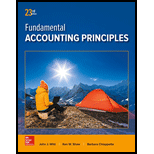
Introduction:
Ratio Analysis
• Ratio analysis is a study of several key metrics of a company based on the data presented in its’ financial statements with an objective to evaluate the financial health of a company.
• It is essential for investors, stakeholders, government bodies etc. to evaluate the key metrics of an entity in order to ensure that the company fulfills the going concern principle and displays financial stability.
The key metrics mentioned above include the following:
•
• Current assets are assets that are convertible to cash within a period of one year or less. Current liabilities are liabilities that need to be discharged within a period of one year or less.
• Acid Test Ratio – Also known as quick ratio, it seeks to measure the liquidity position of the Business.
• It seeks to measure the short term liquidity position of the business by comparing the liquid assets i.e. current assets that are readily convertible to cash / liquid instruments and current liabilities.
• Accounts receivable turnover – A measure of the relation between the turnover and accounts receivable measured in number of times.
• It seeks to measure the relation of the credit sales in proportion to the total turnover and is an indicator of how much of the receivables are blocked due to credit sales.
• Merchandise inventory turnover – A measure of the relation between the turnover and inventory measured in number of times.
• It seeks to measure the relation of the inventory rolled over in proportion to the total turnover and is an indicator of how much of the inventory is fast moving in relation to the total turnover.
•
To Prepare:
Report comparing Morgan and Parker companies highlighting their ability to meet current obligations and use current assets efficiently
Want to see the full answer?
Check out a sample textbook solution
Chapter 17 Solutions
Fundamental Accounting Principles
- The Keller Company reported total manufacturing costs of $237,000; manufacturing overhead totaling $52,000 and direct materials totaling $75,000. How much is direct labor cost? helparrow_forwardHelparrow_forwardIn pension accounting, actuarial gains and losses are____. (a) Added to pension obligation directly (b) Always recognized immediately in profit or loss (c) Recognized in other comprehensive income (d) Deferred indefinitelyarrow_forward
- Vista Market Store's daily register records an opening float of $250. During the day, the store made $3,120 in cash sales and $4,500 in credit card sales, while processing $180 in returns. Based on these transactions, calculate the expected cash amount in the register at the end of the day. Helparrow_forwardPlease provide the solution to this general accounting question using proper accounting principles.arrow_forwardShakespeare Motors has 12 employees and each employee is paid on average $165 per day and works 6 days a week. The company's year-end is December 31. The employees were last paid onDecember 22 for the two weeks that ended on December 15. What is the wages and salary payable to record for December 31?arrow_forward
- Given solution for General accounting question not use aiarrow_forwardWhat is the company's desired profit for the yeararrow_forwardJob costing- Trendex Company has the following data: direct labor $195,000, direct materials used $215,000, total manufacturing overhead $268,000, and beginning work in process $45,000. Compute total manufacturing costs.arrow_forward

 AccountingAccountingISBN:9781337272094Author:WARREN, Carl S., Reeve, James M., Duchac, Jonathan E.Publisher:Cengage Learning,
AccountingAccountingISBN:9781337272094Author:WARREN, Carl S., Reeve, James M., Duchac, Jonathan E.Publisher:Cengage Learning, Accounting Information SystemsAccountingISBN:9781337619202Author:Hall, James A.Publisher:Cengage Learning,
Accounting Information SystemsAccountingISBN:9781337619202Author:Hall, James A.Publisher:Cengage Learning, Horngren's Cost Accounting: A Managerial Emphasis...AccountingISBN:9780134475585Author:Srikant M. Datar, Madhav V. RajanPublisher:PEARSON
Horngren's Cost Accounting: A Managerial Emphasis...AccountingISBN:9780134475585Author:Srikant M. Datar, Madhav V. RajanPublisher:PEARSON Intermediate AccountingAccountingISBN:9781259722660Author:J. David Spiceland, Mark W. Nelson, Wayne M ThomasPublisher:McGraw-Hill Education
Intermediate AccountingAccountingISBN:9781259722660Author:J. David Spiceland, Mark W. Nelson, Wayne M ThomasPublisher:McGraw-Hill Education Financial and Managerial AccountingAccountingISBN:9781259726705Author:John J Wild, Ken W. Shaw, Barbara Chiappetta Fundamental Accounting PrinciplesPublisher:McGraw-Hill Education
Financial and Managerial AccountingAccountingISBN:9781259726705Author:John J Wild, Ken W. Shaw, Barbara Chiappetta Fundamental Accounting PrinciplesPublisher:McGraw-Hill Education





